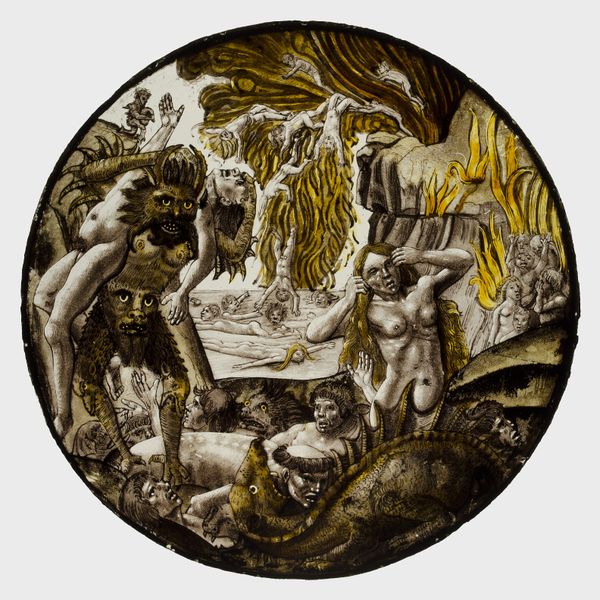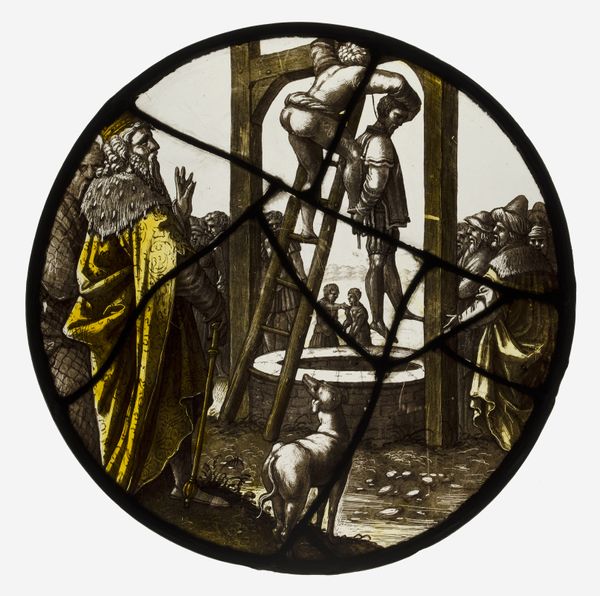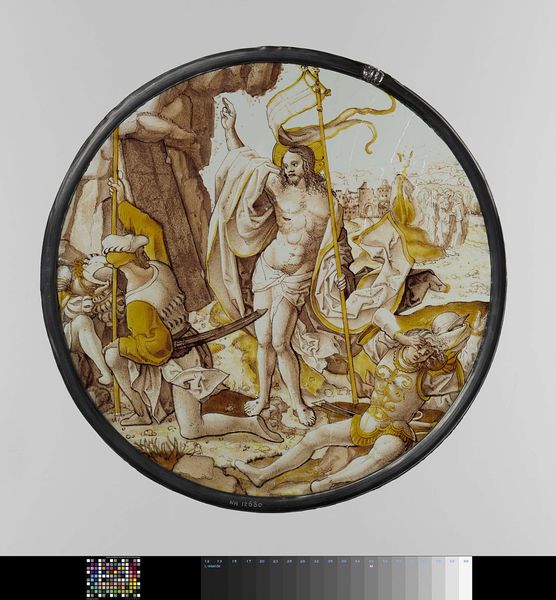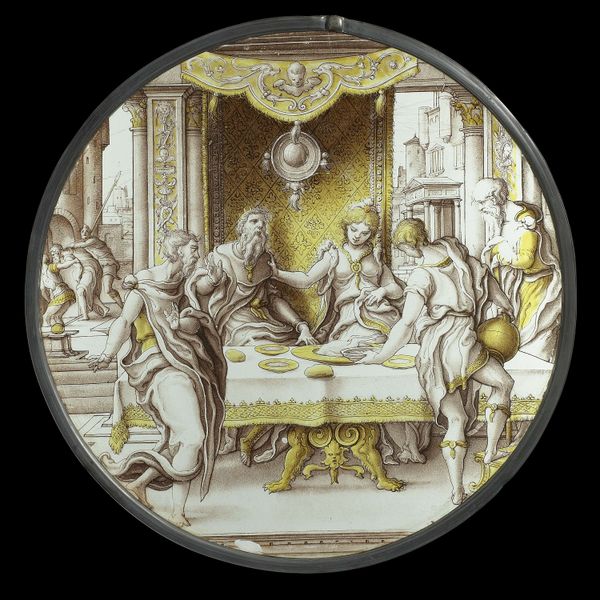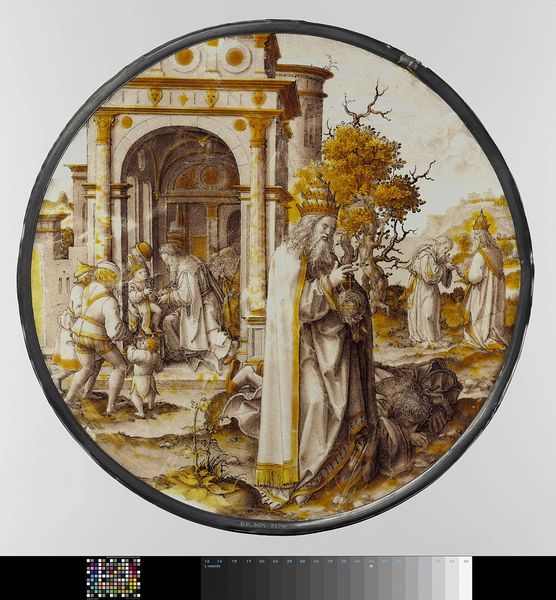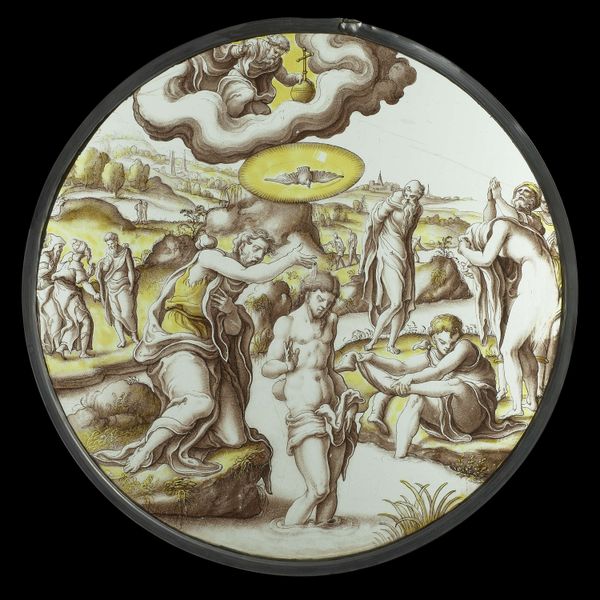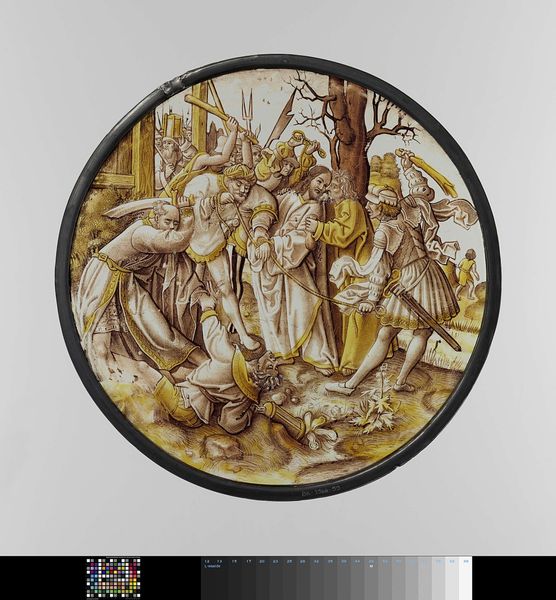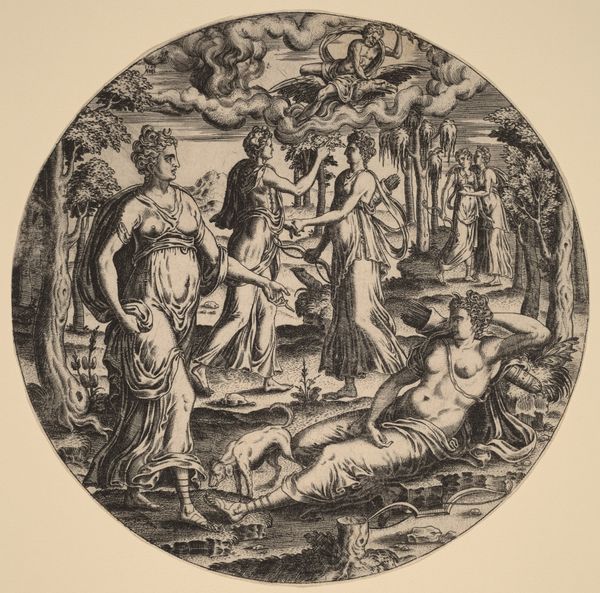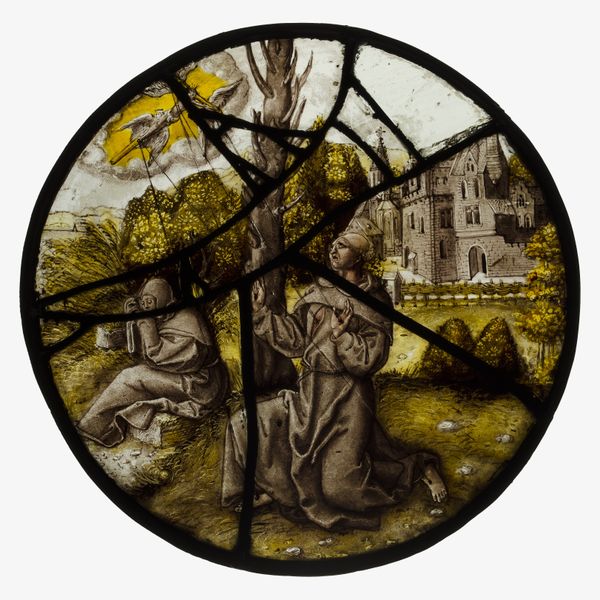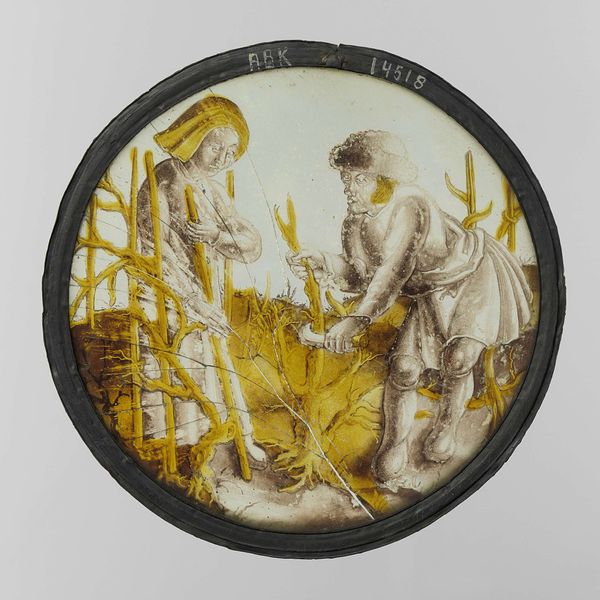
tempera, glass
#
narrative-art
#
tempera
#
landscape
#
figuration
#
glass
#
watercolour illustration
#
history-painting
#
italian-renaissance
Copyright: Rijks Museum: Open Domain
Curator: Let's examine "Christ in the Garden of Olives," a stained-glass roundel created circa 1530, currently held at the Rijksmuseum. Editor: My first impression? The figures look suspended in time, their slumber an eerie contrast to the scene's gravity. There's a tonal unity created by the yellow stain that pervades the roundel giving an odd uniformity despite the clear foreground-background compositional strategies. Curator: Exactly. We need to consider the painstaking process of glass staining and painting in the 16th century. This piece likely involved apprentices and specialized workshops, dividing labor to produce these luxury objects for wealthy patrons. Editor: True, but consider the formal elements. Note the converging diagonals leading the eye to Christ, highlighting His divine light. The composition employs subtle chiaroscuro, which is so expertly worked into this tempera-on-glass design, to imbue the figures with volume. And even that peripheral city evokes depth in perspective. Curator: These roundels served a function beyond aesthetic pleasure; they offered a clear message of faith, intended for instruction as much as decoration, meant to visually cement one’s connection to godliness and virtue. Editor: Yet the visual language is equally fascinating. The haloed Christ strikes a dramatic pose—arms raised towards the heavens—and note the distinct, classical drapery falling on and around Him, and His followers—an idealised human form reflecting renaissance interest in antiquity. Curator: Let's think about the cultural context, it shows us a window onto societal values. This image of pious devotion would ideally align with the homeowner's spiritual identity, reaffirming both religious and social standing in a time when sacred belief was intimately linked to power. Editor: Yes, and there’s more here than only status or belief, isn’t there? Note that abandoned sword in the foreground. With the soldiers fast asleep it could represent their failure to protect Him. Visually and structurally there is some clever visual narration in the design here. Curator: That speaks volumes, yes. Appreciating both its creation and cultural symbolism deepens our understanding. Editor: Agreed, a great intersection of form and historical context to see meaning here.
Comments
No comments
Be the first to comment and join the conversation on the ultimate creative platform.


